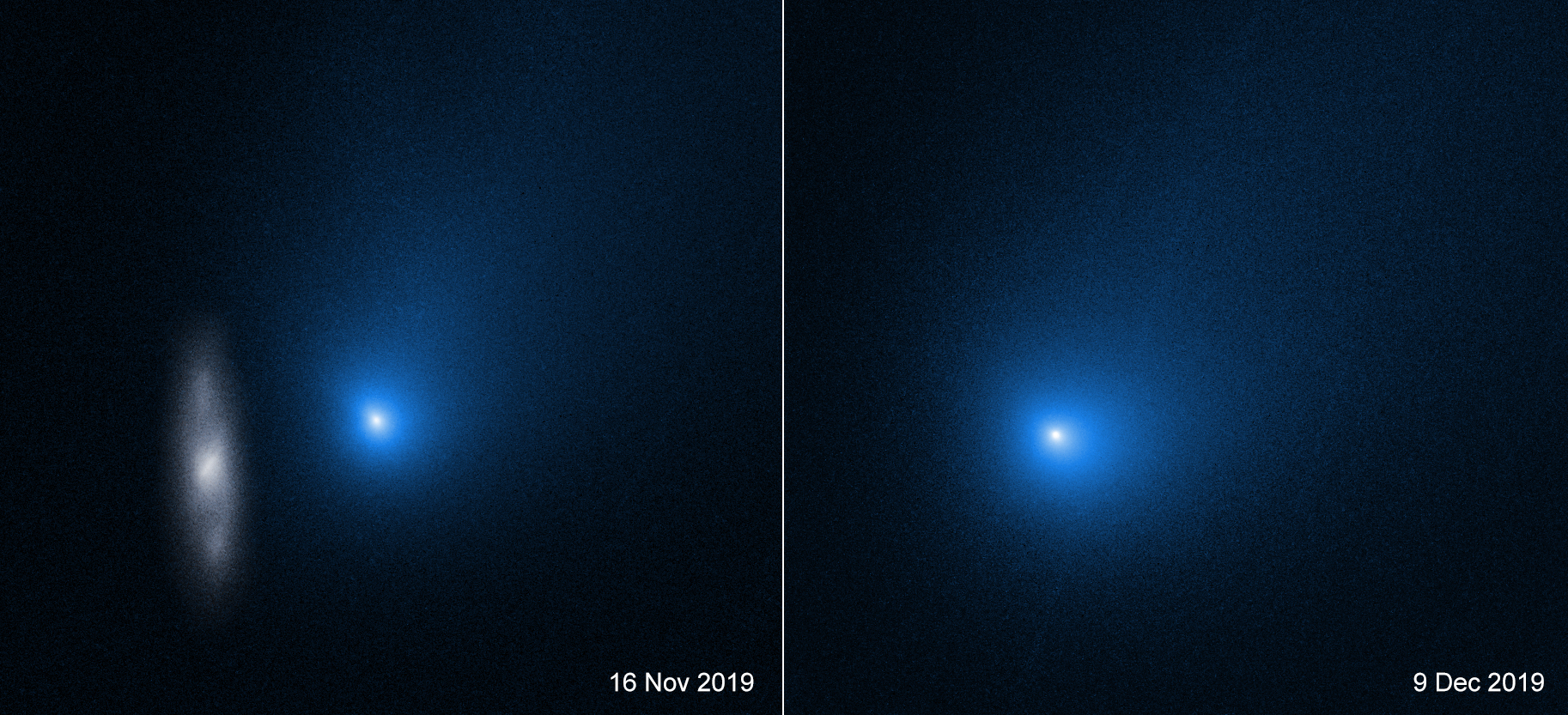Press Release
Interstellar Comet Borisov Likely Comes From a Red Dwarf Star, Researchers Say
Comet 2I/Borisov seemingly came out of nowhere late last summer, when comet hunter Gennadiy Borisov in Crimea discovered the vagabond coursing toward our star. Based on its orbit around the Sun, scientists knew Borisov was an interloper from another solar system, the second one ever known to pass through our neighborhood. But it looked very much like any other comet they had seen — until now.
With the help of NASA’s Hubble Space Telescope, researchers observed vapors rich in carbon monoxide breathing out from Borisov as it veered ever closer to the Sun, a characteristic unlike comets in our solar system. It’s a fact that points to Borisov’s parent star possibly being a cool red dwarf, the researchers suggested April 20 in Nature Astronomy, giving us the first ever glimpse into the chemical building blocks of another solar system.
“We’ve been studying the composition of comets here for decades and using this information to understand how planets in our solar system formed and evolved,” said Kathleen Mandt, a planetary scientist and study author from the Johns Hopkins Applied Physics Laboratory in Laurel, Maryland. “Measuring the composition of a comet from another planetary system was an opportunity we couldn’t miss!”
Comets are the solar system’s icy dirtballs. They’re compressed wads of ice, gas and dust that date back to the formation of the planets. As these dirty ice cubes fall closer to the Sun, the warmth releases ices from the rock’s surface, creating a bright coma, or gas cloud. Scientists can examine the coma and decompose into its chemical makeup, giving researchers an unusual opportunity to see how molecular compositions and abundances shift with distance from the Sun.
A comet from another solar system should convey similar information. So the team used Hubble’s Cosmic Origins Spectrograph to analyze Borisov in ultraviolet light over four periods from Dec. 2019 to Jan. 2020, which allowed them to watch as carbon monoxide, water, oxygen and carbon dioxide ices exhaled from the comet.
The researchers were surprised to find Borisov’s bright coma was rich in carbon monoxide gas relative to water vapor, a finding that measurements from NASA’s Swift satellite over the same period confirmed. Carbon monoxide was at least 50% more abundant than water ice — a value more than three times greater than the average of any comet measured in the inner solar system.
“Even though the composition of comets in our solar system can vary significantly from one comet to the next, we have never seen a comet this close to the Sun with this much carbon monoxide compared to water,” Mandt said.
Carbon monoxide ice is an extremely volatile molecule, shifting from ice to gas with the slightest ray of sunshine. In our solar system, that phase change can begin around 11 billion miles from the Sun — almost three times the distance between Pluto and the Sun at its farthest point.
Water, on the other hand, resists subliming until the comet comes within 200 million miles of the Sun, between Mars and the inner edge of the Asteroid Belt. Once there, it almost always dominates over other gases, the researchers said. Only a couple comets have ever broken that rule, but even those, when compared with the amount of carbon monoxide Borisov put out at any given distance, were significantly lower.
“Borisov’s large wealth of carbon monoxide implies that it came from a planet formation region that has very different chemical properties than the disk from which our solar system formed,” said astrophysicist Dennis Bodewits, the study’s lead author from Auburn University in Alabama.
Borisov, the team suggests, probably formed far from a star, where carbon monoxide ice is stable, but where perturbations from a large planet could still eject the comet from its home.

